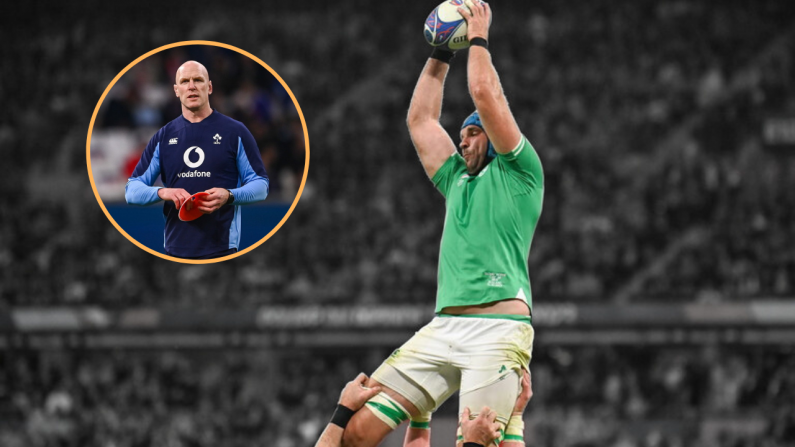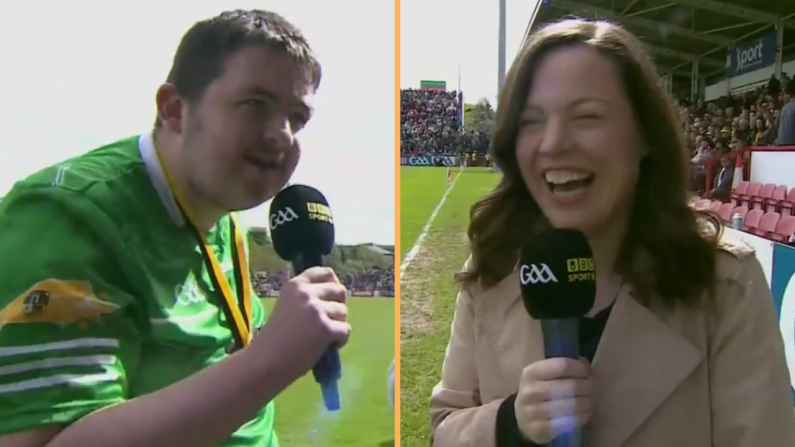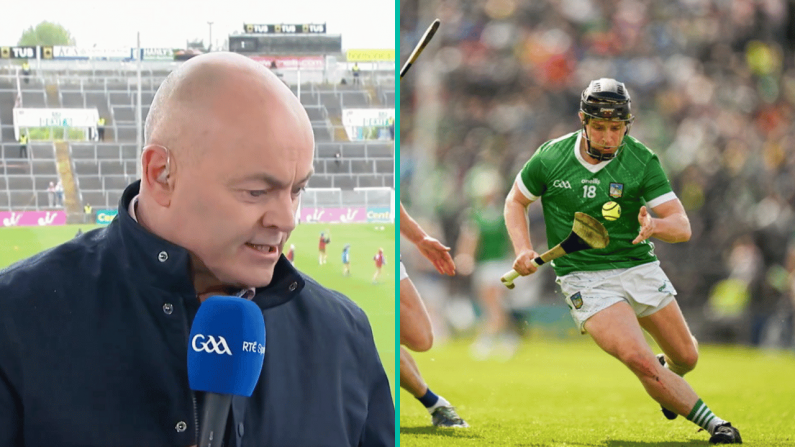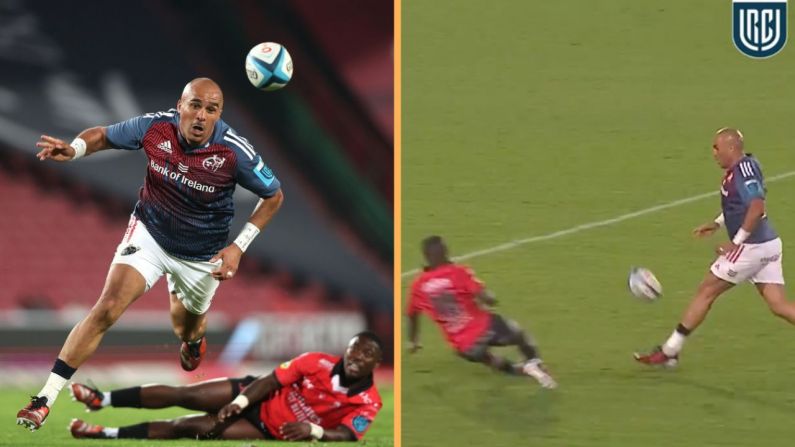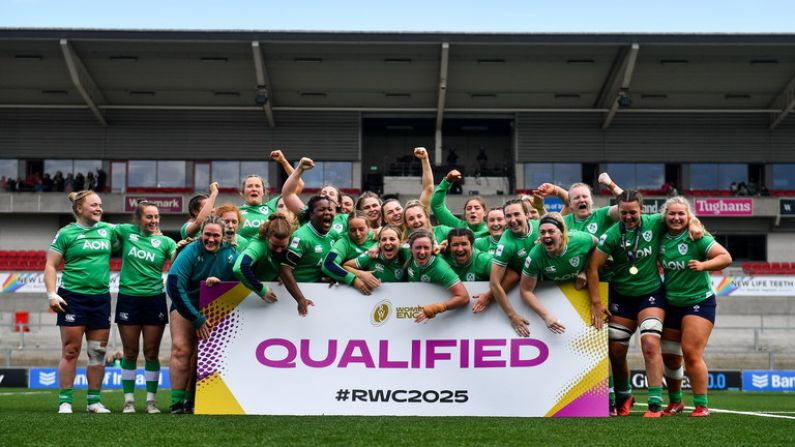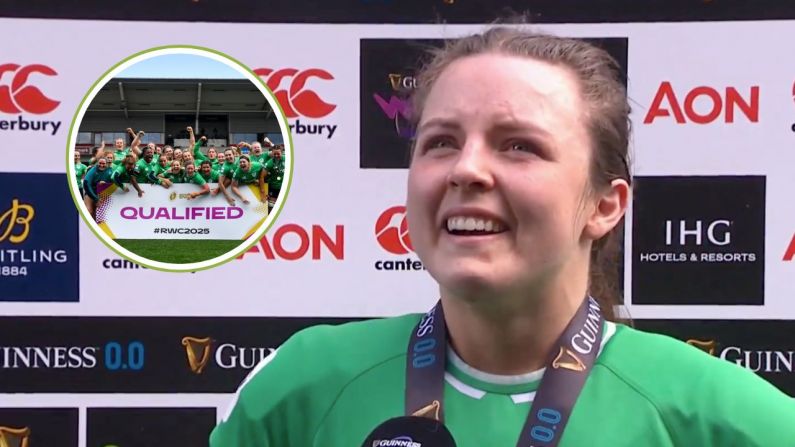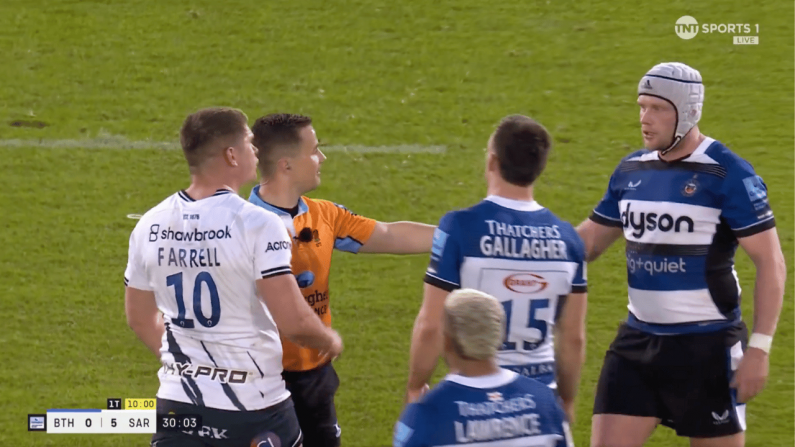As the Ireland rugby team approached the 2023 Rugby World Cup, the team was considered a top contender to lift the title. However, a significant challenge that emerged during the competition was the underperformance of their lineout. Post-tournament analysis revealed that Ireland was ranked 13th among participating teams in terms of lineout % wins, successfully securing only 82.5% of their throws. This was a notable shortfall when compared to leading teams such as New Zealand and France. Despite possessing exceptional athletes and lineout specialists, Ireland's lineout execution failed to meet the high standards established in other facets of their game.
Will we see an improved lineout from Ireland tonight?#FRAvIRE | #GuinnessSixNations pic.twitter.com/Snbih1M1Sx
— Virgin Media Sport (@VMSportIE) February 2, 2024

Lineout Strategy
Addressing the lineout shortcomings had to become a critical focus for both the players and coach Paul O’Connell during their pre-Six Nations training camp in Portugal in the last few weeks. The opening match against France on Friday night showcased significant improvement, achieving a perfect 13 out of 13 lineouts, a testament to the players' efforts and the coaching staff's thorough work and scouting of France.
A notable aspect of the lineout performance was that 9 of the 13 successes occurred while France's Willemse, known for his disciplinary issues, was either in the sin bin or off the field. Additionally, France's apprehension regarding Ireland's lineout launch plays led them to adjust their defence, opting to compete with one fewer player in the lineout and positioning Gregory Alldritt, their No. 8, in the midfield defence. This strategy was employed even when Willemse was on the field. The decision not to select Cameron Woki for the French team further compounded their lineout defensive woes, revealing a lack of a coherent strategy in this area. O’Connell & co must have been delighted to see the French selection.

France left Alldritt in the midfield to defend / leaving them short in their Lineout Defence.
The turnaround was staggering for Ireland
- Ireland won all 13/13 Lineouts
- Beirne won 5 of the 13 lineouts
- All 5 Irish tries came from Lineout
- 2 Maul tries were scored
SEE ALSO: Ex-Scotland Star Not Thrilled By The Sight Of Ireland Hammering France In Six Nations
SEE ALSO: Ireland Player Ratings As World Cup Hangover Cleared With France Hammering
Lineout Strategy – Find the non-Jumpers
A pivotal tactic for Ireland involved identifying Willemse's position in the French defence, as he primarily serves as a lifter, with France not utilising him as a jumper as he is difficult to lift and not very quick. Consequently, Ireland meticulously sought him out during their lineout setups. In the match's opening lineout, in the first minute, Beirne recognised Willemse's position during his approach and chose to jump exactly where Willemse was positioned to lift. This demonstrated exceptional lineout calling strategy, which persisted into the second half, even as young Posolo Tuilagi entered the game.

Beirne looking to jump on where Willemse was looking to lift.

Ireland turned the maul into a numbers game
Ireland employed a menu selection approach to their lineouts, utilising 4, 5, 6 and 7-man formations with Josh Van der Flier in the scrum-half position to initiate their maul. By integrating the "plus" player into the maul, along with the addition of the hooker (Sheehan/Kelleher), Ireland was able to engage 8 players in their maul against the 6 French lineout participants. The French team refrained from using their "plus" player into the defence maul, and with Alldritt positioned in the midfield, Ireland capitalised on this numerical advantage in the maul.

𝐅𝐈𝐕𝐄 𝐓𝐑𝐈𝐄𝐒 𝐈𝐍 𝐅𝐑𝐀𝐍𝐂𝐄!! 🟢
This has been sensational from Ireland! Ronan Kelleher with the fifth!#FRAvIRE | #GuinnessSixNations pic.twitter.com/LD6Cn5E9rs— Virgin Media Sport (@VMSportIE) February 2, 2024


Ireland would use Van der Flier as a “plus” .
⌚️ Dan Sheehan crashed over the line in plenty of time for Ireland to pick up the bonus point try out in Marseille in the opening round of the Championship 🤩#Breitling #DefiningMoment @Breitling pic.twitter.com/EwDQECkyTM
— Guinness Men's Six Nations (@SixNationsRugby) February 2, 2024

Van der Flier secures maul as a “plus” & Sheehan joins maul – making it 8 v 6.
However, Ireland's prowess was not limited to their own lineouts. They successfully intercepted 4 of France's lineouts throughout the match, with Beirne particularly disrupting the French set piece. Ireland demonstrated their skill and rapid execution by presenting apparent opportunities to France only to swiftly eliminate them. The partnership between McCarthy and Beirne was notably effective in this strategic play.
Love a good lineout defence. this is excellent by McCarthy & Beirne pic.twitter.com/WDQ1pnSin7
— Brett Igoe (@brettruganalyst) February 4, 2024
Having put the World Cup disappointment behind them, Ireland now sets their sights on the upcoming challenge against Italy on Sunday at the Aviva Stadium. The resolution of the lineout issues, evident in their performance against France, marks a significant improvement. However, the true test lies ahead: maintaining this level of performance against teams that manage to keep all their players on the field. With Ireland having scored five tries directly from lineouts, the advantage of a fully functional lineout for the team's overall performance is clear.
The question now is whether they can replicate this success in future matches.

